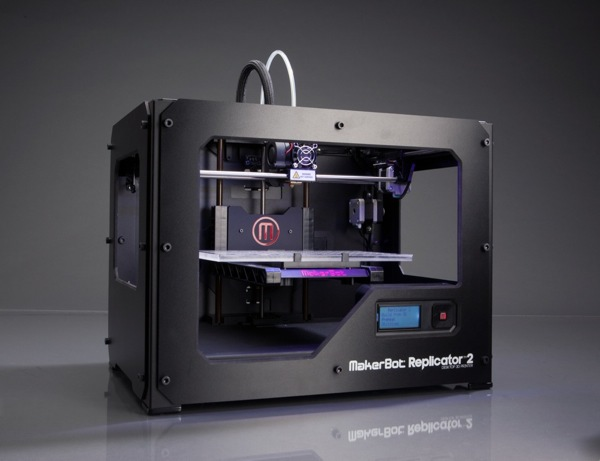

Some have claimed that the advance of medical (and computer) technology is progressing at a rate faster than the human mind can assimilate. 3D printing is simply two-dimensional printing built upwards. The most exciting aspect of 3D printing involves is the promise of healthcare solutions so tailored to the individual, only “personalized medicine”—dependent on individual gene sequencing—can compete.
3D Printing in Orthopedics
3D printers emerged on the scene only to meet skeptics saying, “who needs more plastic keychains and salt shakers.” Doctors, nurses and other healthcare professionals, however, got stars in their eyes immediately. They recognized that initial, simple prototypes like toys and household items only hinted at the medical solutions this new technology would provide. Medical visionaries locked onto the 3D printer coordinates with a laser focus.
The orthopedists were the first to stand in line for 3D printers. They first adapted 3D printers so that it could use material that disintegrates over time. The development of a material the body accepts as itself is quite a feat.
Before inserting this synthetic scaffolding the 3D material provides, orthopedists and engineers create a computer model that fits a patient’s bone structure precisely. Using a matrix of zinc, silicon and calcium phosphate, they create a strong and flexible progenitor that incites the body’s natural processes to build real bone around it. Like the hero that does the hard work and then vanishes into the night, once the bone can handle its role in supporting the skeleton, this synthetic matrix disintegrates without harming the body. So far, this 3D bone infrastructure has worked well in rabbits, and human trials lie ahead.
3D Printing and Prosthetics
Prosthetic designers have long grappled with the issue that their creations cause discomfort to their patients. Now with the help of 3D printers, professionals in a few select facilities can scan patient’s healthy legs, reverse the images, feed it into a computer and scan this information into a computer. Then they go to work doing what they do best, crafting a prosthetic that fits their clients precisely. Patients report that they feel “like myself” again.
While access to this technology is not yet widespread, hospitals have partnered with companies like Konic Minolta and 3D Systems to lease this expensive, high-tech equipment. Otherwise, hospitals would not be able to provide the most cutting-edge solutions for their clients. Patients needing well-fitting equipment need to be pro-active in finding the hospitals within their plans that offer this sophisticated solution. For more information, explore the website Enabling the Future which brings together engineers, 3D print enthusiasts, occupational therapists, university professors, designers, parents, families, artists, students, teachers to ensure those needing 3D prosthetics know their options and opportunities.
3D Printing and Dentistry
With the improvements in 3D printing technology, it’s likely that custom-made teeth should be coming to an dentist near you in the next few years.
With 3D printer speeds accelerating 100 times in the next year or so, you should be seeing them in your dentist or oral surgeons office soon. These machines should have the capability of printing a new tooth is six to seven minutes. There it is: a part of your body in the paper tray.
Officially termed, “Chairside Economical Restoration of Esthetic Ceramics,” technically, this technology has been available for years. It’s just been incredibly expensive and the smart dentists and oral surgeons were waiting for the “bugs” to be worked out.
Coming Next: 3D Printing in Heart Disease Surgery
3D printing’s precision coupled with advances in materials the body won’t reject excite practitioners in all fields. The next frontier is heart surgery, where personalized 3D printed stents for veins and arteries could prolong life and quality of life. In a tribute to the ambition of heart doctors, researchers and biomedical engineers, teams are aiming to create perfectly fitting 3D stents while surgery proceeds. Believe it or not, this ambitious goal is currently in clinical trials!
Robert B. McCray is the President & CEO of the Wireless-Life Sciences Alliance, Chairman of Alliance Healthcare Foundation, Special Adviser to TripleTree LLC, Member of Midmark Corporation Board of Directors, Member of Board of Directors of CONNECT and an active adviser to several companies. Rob leverages over 25 years of experience as a business owner, senior operating executive, and legal and transactional adviser to private and public companies.
